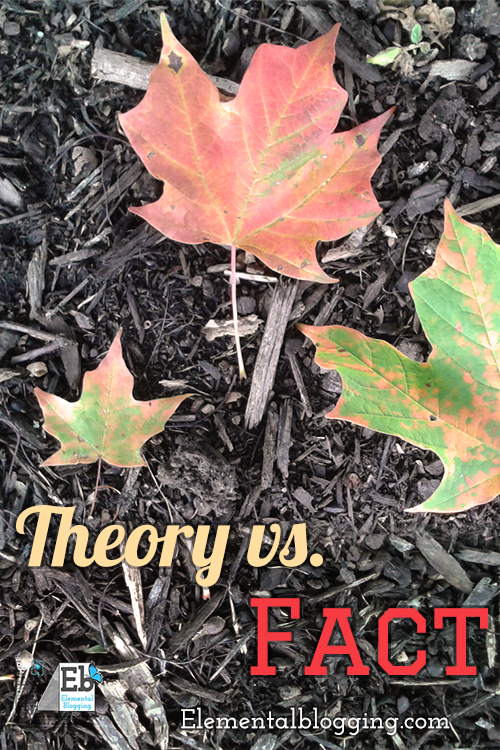 I love science.
I love science.
I love watching a reaction unfold.
I love the feel of holding an Erlenmeyer flask in my hand.
I love using pipettes – especially the ones you can dial in to a specific measurement which is so much more fun than a teaspoon measurement.
I also secretly enjoy putting on safety glasses. There’s just something about them that makes you really feel like a scientist.
Now that I completely convinced you of my . . . umm . . . let’s say uniqueness, I must share a problem that I have with my scientific love affair – I tend to speak like a scientist, which can lead to misunderstandings.
So, today I want to clear the air on two terms that are often used interchangeably – theory and fact. The truth is that to a scientist there is a world of difference in those two words.
Let’s dig in!
Theory vs. Fact
We all know that a scientist spends a great deal of time in the lab using the scientific method. He or she is constantly coming up with innovative ideas and using experimentation to prove these concepts.
In the process, he or she will come up with a hypothesis that through one experiment seems to be proven true. The problem is that there are other variables at work. Ones that the scientist did not test in the original experiment.
These untested factors could potentially change his or her results and prove the hypothesis to be false. The scientist may also see that others are not able to reproduce the results that he or she had in the lab, or that nature contradicts what was produced by his or her hands in a controlled setting.
For these reasons the scientist will use either the word theory or the word fact to describe his or her findings.
When you dig a bit deeper into the origins of the words, you really begin to understand what the scientist is trying to convey.
What is a theory?
The word theory comes from the ancient Greek word theoria, which means:
A looking at, viewing, or beholding.
In science, a theory is an analytical tool used for understanding, explaining, or predicting cause for a certain subject matter.
What is a fact?
The word fact is comes from the Latin word factum, which means:
A thing done or performed.
In science, a fact is an objective truth that can be seen in nature or confirmed through repeated experiments.
Now that we understand these word origins, we can say that theories are meant to be tested by experimentation and observation to determine if they are fact, while facts are truths that can be verified through repeatable experimentation or by real-time observations.
In other words, using the word theory tells other scientists that this idea is still be worked on, but the word fact says that this idea is proven to be true.
The Final Product
In essence, theories are ideas that we need to test further, while facts have been proven to be true by multiple scientists or by nature itself.
I trust that clears up any misunderstandings we might have in the future, but if you still have questions, please don’t hesitate to let me know in the comments below!

 Sign up below to receive weekly tips & tools for homeschool science and we'll send you a FREE copy of
Sign up below to receive weekly tips & tools for homeschool science and we'll send you a FREE copy of
This post is coming at a perfect time, Paige! We’re discussing theories, facts, the scientific method, etc. this year so this will definitely be included in our discussion!
Tonia, I’m so glad you found it useful! I hesitate to get so technical at times on this blog, as hands-on experiments are way more fun, but my main goal is to provide a resource for homeschool moms. All that to say that it means a great deal to know this post will be added to your discussions this year :-)!